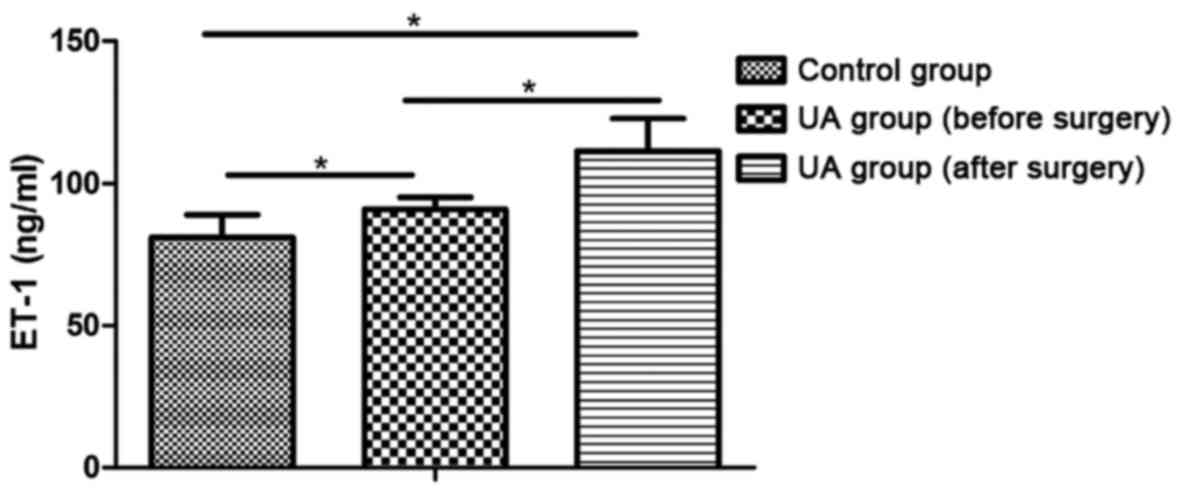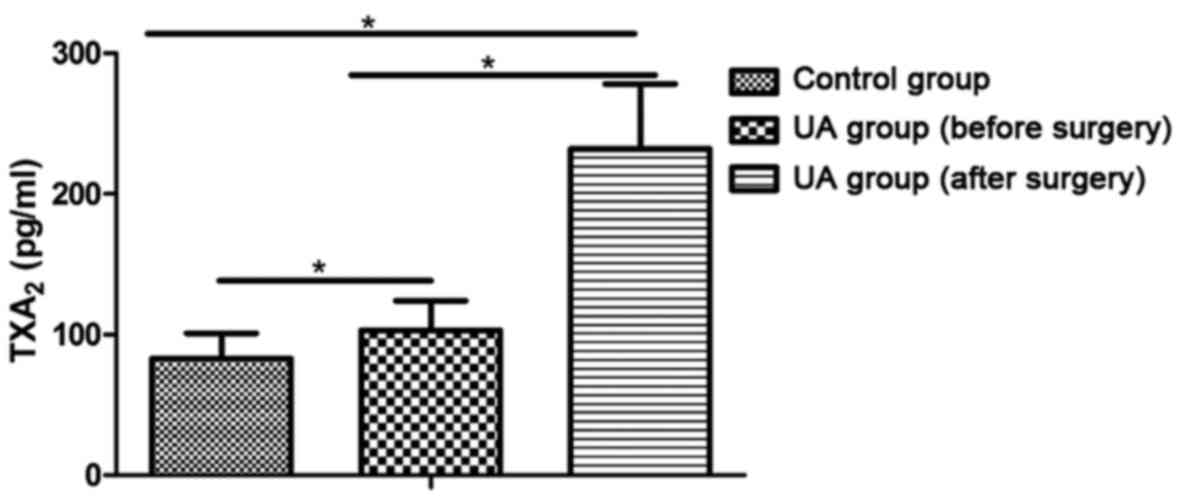Blood rheology of angina pectoris patients with myocardial injury after ischemia reperfusion and its effect on thromboxane B2 levels
- Authors:
- Published online on: November 6, 2017 https://doi.org/10.3892/etm.2017.5449
- Pages: 769-772
-
Copyright: © Wang et al. This is an open access article distributed under the terms of Creative Commons Attribution License.
Metrics:
Total
Views: 0 (Spandidos Publications: | PMC Statistics:
)
Total PDF Downloads: 0 (Spandidos Publications: | PMC Statistics:
)
Abstract
This study investigated the changes in the blood rheology of patients with angina pectoris and ischemia reperfusion injury and their effect on thromboxane B2 (TXB2) levels to examine their relationship. Forty patients with unstable angina pectoris who underwent elective percutaneous coronary intervention (PCI) were selected for the unstable angina group (UA group) and forty patients deemed free of coronary heart disease by coronary angiography were selected for the control group. Venous blood samples were drawn from all participants; patients in the UA group had blood drawn 1 day before and 1 day after the PCI procedure. Blood samples were used to analyze blood rheology and examine hemodynamic parameters, at the same time radioimmunoassay was applied to measure the concentrations of serum endothelin-1 (ET-1) and TXB2, and an automatic biochemical analyzer was used to detect the content of superoxide dismutase (SOD) and malondialdehyde (MDA). Our results showed the patients in the UA group all presented hyperviscosity; however the levels were higher for the patients in the UA group (after surgery) than for those in the UA group (before surgery). Patients in the control group exhibited normal levels, and the differences among groups were significant in pairwise comparisons (P<0.05). The levels of ET-1 and TXB2 in the UA group were increased compared with those in control group and they were highest after surgery (P<0.05). For the patients in the UA group, the serum TXB2 concentration increased gradually along with the increase in risk stratification. There were significant differences in comparisons between different strata and between UA patients and those in the control group (P<0.05). The serum SOD activity levels were lowest in the UA group (after surgery), higher in the UA group (before surgery) and highest in the control group. Conversely, the MDA content was highest in the UA group (after surgery), lower in the UA group (before surgery) and smallest in the control group; there were significant differences in pairwise comparisons. Based on our findings, a hyperviscosity syndrome was manifested in the blood rheology of patients with angina pectoris and ischemia reperfusion injury. The higher than normal TXB2 levels can be used as a marker of platelet activation and a reference for clinical risk stratification, thus having great significance for the prevention and treatment of ischemia reperfusion injury and assessment of disease progression.












